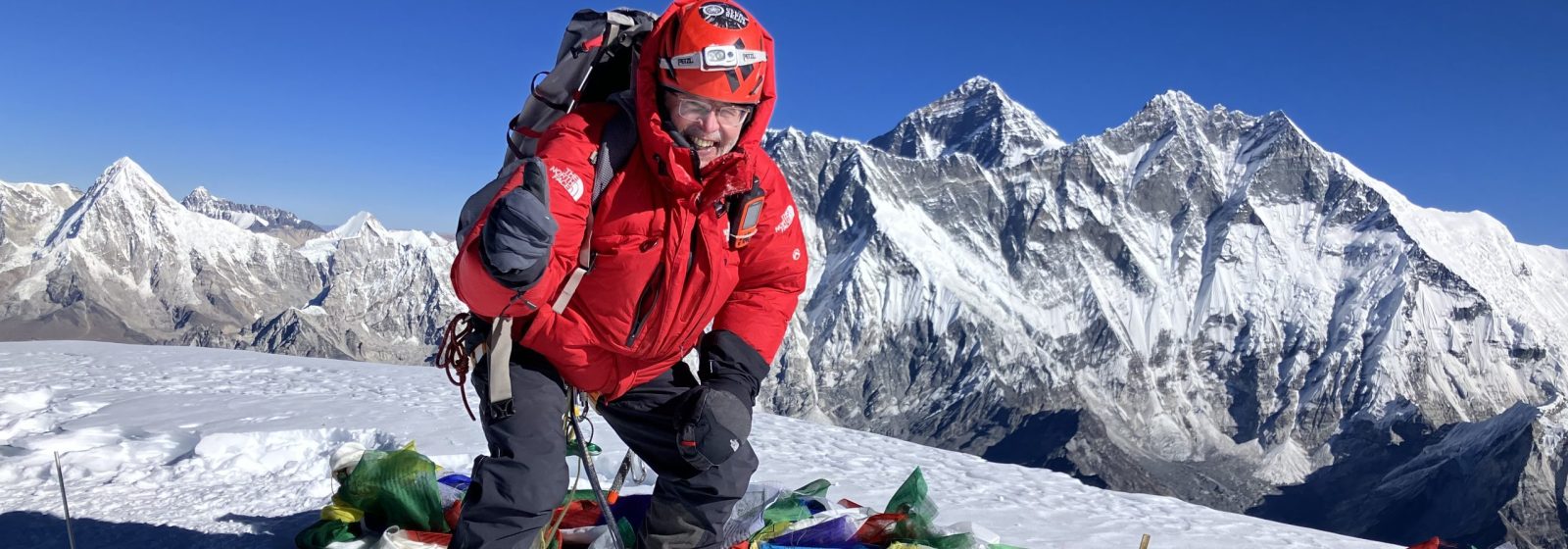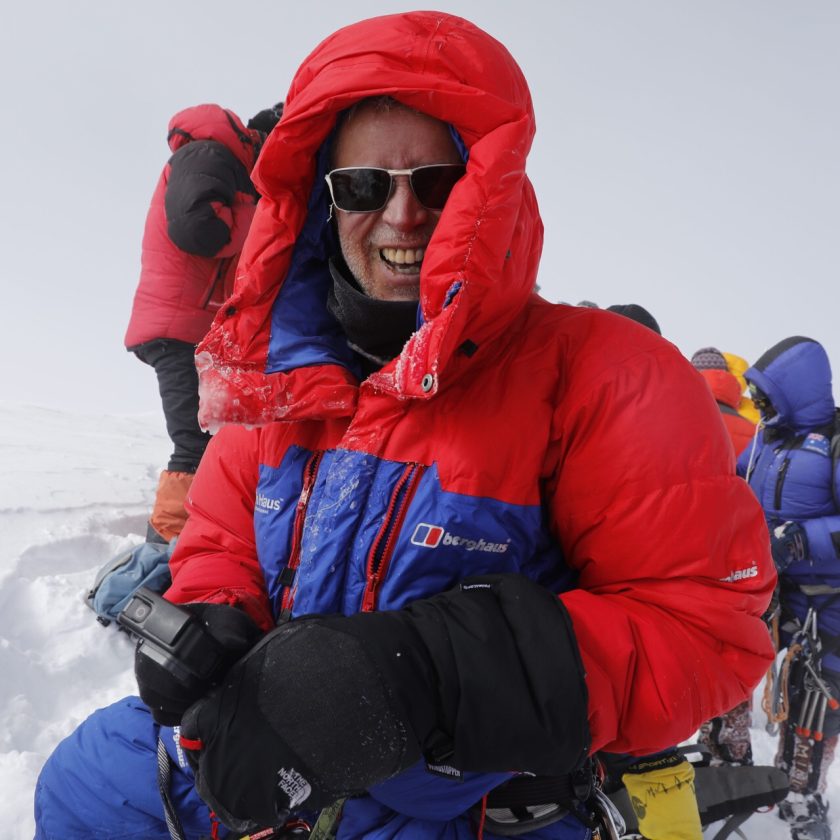
Paul Hegge, Rail Freight Forward coordinator and former director of public affairs and corporate social responsibility at Lineas, is an experienced alpinist and avid climber. For the Summer Series, he tells how his passion for the mountains began at an early age.
As a child, Paul Hegge was severely asthmatic. His parents took him to the mountains in summer, the only place where he could breathe pure air. There the seeds were sown for later moving back to the mountains. As a child, he had two heroes: Abebe Bikila, the first African marathon runner to win barefoot gold at the Olympics, and Reinhold Messner, the first human to climb all 14 8,000-metre peaks. “Most young people at that age have a footballer or pop star as an idol, I looked up to those two athletes immensely,” he said.
He started running at a young age, despite his asthma. “After a few years, it turned out to be extremely good for me. My resistance and lung capacity doubled. Unfortunately, at 14, I broke my knees running long distances. It took years and many operations before I could walk and cycle decently again. Only at 20 was I able to retire.”
At 28, Paul Hegge stepped into diplomacy and left for India as a Flemish economic representative. “I lived a few days from the Himalayas and spent all my holidays trekking. Although I didn’t climb any peaks then, I learned to cope with my bad knees. In 2003, I wanted to fulfil my dream of climbing an 8,000-metre peak. I started internships with the Alpine Club of Belgium and learnt different climbing techniques.”
8,000 metres
In 2012, he climbed Aconcagua in Argentina, a summit of about 7,000 metres. “Of the 15 men in our team, only two reached the summit, including me. Since reaching this summit was done in poor conditions, my guide, who had climbed Mount Everest, said I should be able to climb an 8,000-metre summit.
Paul Hegge climbed Gasherbrum II in Pakistan in 2014, his first 8,000-metre summit, without oxygen. Two years later, he got the chance to climb Mount Everest via the north face, along the Tibetan side. “I was just between jobs at the time, the timing was ideal,” he says.
In 2018, he climbed K2 in Pakistan, the second highest and most difficult mountain in the world. “I was the first Belgian to reach the summit there. The risks were enormous. Until the year I went there, one in four climbers did not come back. But I made it there in one piece.”
Continue reading below the photo.

Climate warming
Paul Hegge recently made another attempt on another 8,000-metre summit, but failed. A few hours from the summit, he turned back because it was far too hot. “Because of global warming and bad weather, we couldn’t tie a rope. If you can work at that altitude without gloves, something is not right.”
Currently, he has no more high summits in sight, but he is back to solo climbing. “I did two last year in Nepal,” he says.
Mountaineering remains a great passion. According to him, it is an innate drive or talent, which he wants to make full use of. “Those high peaks are also addictive. You are away from the world for six, seven weeks. It’s back to basics. It’s about survival. You focus completely on yourself, but at the same time you are very aware of your surroundings.”
Preparation
Such climbs require intensive training. Good basic fitness is essential, with at least 16 to 20 hours of physical training per week for six to seven months before the climb. “There is stress in organising the training and combining it with your work and family, but that is different from the negative stress of your job.”
It takes time to become an all-round climber. “You have to master all the techniques and know how your body reacts at different altitudes. You climb a mountain by a thousand metres. Climb a 4,000-metre mountain first before switching to a 5,000-metre one, and so on.”
People who want to get to the top too quickly and lack experience put themselves and others at risk. Paul Hegge denounces the hyper-commercialisation of climbs such as Mount Everest. “There are only a few days a year with favourable weather, so everyone tries to reach the summit at the same time. That’s why I climbed the north face, which is more difficult and technical, but where there are fewer people. I understand there are restrictions now, but I am against further price increases. There should be better entry conditions, such as mandatory climbing of at least one other 8,000-metre summit.”
Reaching the summit is a unique experience, he concludes. “The view is fantastically beautiful, but the journey there is much more important. You are happy to have reached the summit, but the hardest part is yet to come. After all, descending is much more dangerous than climbing. The fatigue means you have to pay close attention. Really enjoying it only comes afterwards.”
